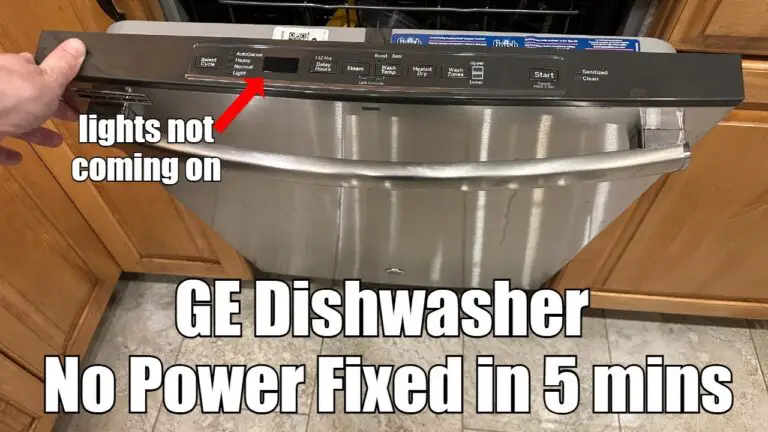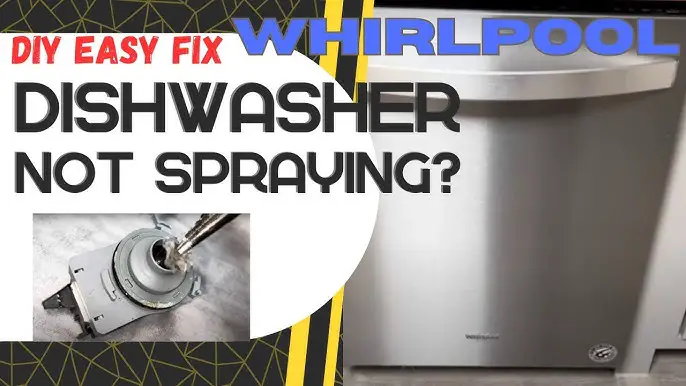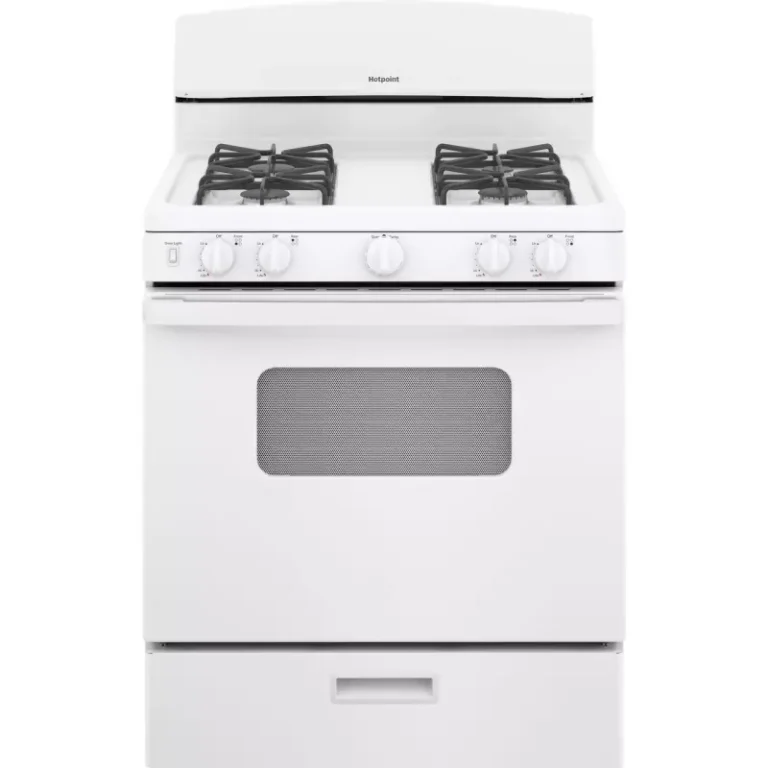Newair Ice Maker Troubleshooting: Fixing Common Issues
If your Newair ice maker is not making ice, check the control arm, power switch, installation, water filter, water flow, freezer temperature, water intake, valve, and home’s water line. Additionally, ensure that there is proper water transfer from the reservoir to the coolant, as the unit will not function if there is no water transfer.
If your ice machine has the right amount of water but is still not making ice, it could be due to a blocked water supply line, which can occur over time if the machine is not cleaned regularly, particularly in areas with hard water. To resolve this issue, clean all water filters and remove any mineral buildup.

Understanding How It Works
When it comes to troubleshooting your Newair ice maker, it’s important to have a good understanding of how it works. This knowledge will help you identify the root cause of any issues and enable you to fix them quickly and efficiently.
Explanation Of Ice-making Process
The ice-making process in a Newair ice maker involves several steps to ensure the production of high-quality ice. Here’s a brief overview of how it works:
- Water is added to the reservoir of the ice maker.
- A water pump then transports the water from the reservoir to the cooling system.
- The cooling system lowers the temperature of the water, causing it to freeze.
- Once the ice has formed, a heating element is activated to release the ice cubes from the mold.
- The ice cubes are collected in the ice bin for easy access and storage.
Understanding this ice-making process will help you pinpoint any specific areas where a malfunction may be occurring.
Overview Of Key Components
To effectively troubleshoot your Newair ice maker, it’s important to know the key components that play a vital role in its operation. These components include:
- Water reservoir: holds the water that will be used to make ice.
- Water pump: Transfers water from the reservoir to the cooling system.
- The cooling system: lowers the temperature of the water, causing it to freeze.
- Ice mold: Forms the ice cubes in the desired shape.
- Heating element: releases the ice cubes from the mold.
- Ice bin: collects the ice cubes for easy retrieval.
Importance Of Water Supply
One crucial factor in ensuring the proper functioning of your Newair ice maker is the water supply. Without an adequate water supply, the ice-making process will be compromised. It’s essential to make sure that the water supply is sufficient and uninterrupted.
Key factors to consider when checking your water supply include:
- Water reservoir fill level: Ensure that the water reservoir is filled to the appropriate level as indicated by the manufacturer’s instructions.
- Water flow rate: Check for any obstructions in the water line that may hinder sufficient water flow.
- Water quality: Poor water quality can affect the taste and quality of the ice. Use filtered or purified water whenever possible.
By paying attention to the water supply, you can resolve potential issues and maintain the optimal performance of your Newair ice maker.
Identifying Water Pump Noise
If you hear an unusual noise coming from your Newair ice maker, it could be due to a problem with the water pump. The water pump is responsible for moving water from the reservoir to the coolant, allowing the ice maker to produce ice. Identifying and troubleshooting water pump noise can help you resolve the issue and get your ice maker working smoothly again.
Common Causes Of Water Pump Noise
There are several potential reasons why you might be experiencing water pump noise in your Newair ice maker. Here are a few common causes:
- 1. Blocked or clogged water lines: Obstructions in the water lines can cause the water pump to work harder and produce noise. Check for any debris or blockages that may be affecting the flow of water.
- 2. Damaged or worn-out water pump: Over time, the water pump can become damaged or worn-out, leading to noise. If you suspect this is the issue, you may need to replace the water pump.
- 3. Low water pressure: Insufficient water pressure can also cause the water pump to work harder and create noise. Check if your water supply is delivering enough pressure for the ice maker to function properly.
Steps For Troubleshooting And Resolving The Issue
If you’re experiencing water pump noise in your Newair ice maker, follow these steps to troubleshoot and resolve the issue:
- Check for any blockages or clogs in the water lines. Use a soft brush or cloth to clean the lines and ensure smooth water flow.
- Inspect the water pump for any signs of damage or wear. If you notice any issues, such as cracks or leaks, you may need to replace the water pump.
- Verify that the water supply is providing sufficient pressure for the ice maker. If you suspect low water pressure, contact a professional to assess and adjust the water supply as needed.
- If the above steps don’t resolve the issue, consider contacting Newair customer support for further assistance. They can provide specific troubleshooting advice or recommend professional repair services if necessary.
By identifying and addressing water pump noise in your Newair ice maker, you can ensure optimal performance and enjoy a steady supply of ice for your convenience. Remember to follow these troubleshooting steps and seek expert help when needed.
Checking The Micro Switches
Micro switches play an important role in the functioning of your Newair ice maker. These small electronic switches act as sensors and are responsible for detecting various conditions within the machine. If your ice maker is not working properly, one possible troubleshooting step is to check the micro switches. In this section, we will explore the introduction and function of microswitches, the steps for inspecting and testing them, and how to fix or replace faulty microswitches.
Introduction To Micro Switches And Their Function
Microswitches are miniaturized electric switches that are designed to be sensitive to even the slightest of physical changes. They are commonly used in appliances, including ice makers, to detect and respond to specific conditions. In the context of an ice maker, microswitches are responsible for detecting the presence of ice, the positioning of the ice bucket, and the state of the water reservoir.
Steps For Inspecting And Testing Micro Switches
When troubleshooting your Newair ice maker, it is important to follow a systematic approach to inspect and test the micro switches. Here are the steps you can take:
- Unplug the ice maker from the power source to ensure safety.
- Locate the micro switches within the ice maker. These switches are usually small and can be found near the ice bucket or water reservoir.
- Visually inspect the microswitches for any signs of damage or misalignment. Look for broken or bent components.
- Ensure that the micro switches are properly connected to the ice maker’s internal wiring.
- To test the functionality of the microswitches, you can use a multimeter. Set the multimeter to the continuity or ohms setting.
- With the ice maker still unplugged, use the multimeter’s probes to test the continuity of each microswitch. When the switch is pressed or activated, the multimeter should indicate continuity. If there is no continuity, it indicates a faulty microswitch.
Fixing Or Replacing Faulty Micro Switches
If you have determined that one or more microswitches in your Newair ice maker are faulty, you have a few options for fixing the issue:
- If the microswitch is misaligned, you can carefully adjust its position to ensure proper contact and activation.
- For damaged or broken microswitches, replacing them with new ones is recommended. You can find compatible microswitches either from the manufacturer or at electronic parts stores.
- When replacing a micro switch, make sure to follow the manufacturer’s instructions or consult a professional if you are unsure about the procedure.
By checking, inspecting, and testing the micro switches in your Newair ice maker, you can identify and resolve any issues that may be affecting its performance. Remember to always prioritize your safety and consult professional assistance if needed.
Dealing With Thin Ice Problems
Thin ice production in Newair ice makers can be a frustrating issue to deal with. Whether you’re hosting a party or just want a refreshing drink, thick ice is essential for keeping beverages at the perfect temperature. Fortunately, there are several reasons why your ice maker might be producing thin ice and steps you can take to troubleshoot and improve its performance.
Possible Reasons For Thin Ice Production
There are a few common culprits behind thin ice production at Newair ice makers. Understanding these possible reasons can help you identify the issue and take appropriate action to resolve it:
- Low water level: If your ice maker’s water reservoir is not adequately filled, it can lead to thin ice production. Check the water level and ensure it meets the recommended fill line.
- Inadequate cooling: Insufficient cooling can also result in thin ice. Ensure that your ice maker is set to the optimal freezing temperature and that the surrounding environment is not too warm.
- Water quality: The quality of the water used in your ice maker can impact ice thickness. Hard water or water with impurities can result in thinner ice. Consider using filtered or distilled water to improve ice quality.
Tips For Improving Ice Thickness
If you’re dealing with thin ice problems in your Newair ice maker, there are a few tips you can follow to improve ice thickness:
- Ensure proper water level: Check and maintain the recommended water level in your ice maker’s reservoir to ensure optimal ice production.
- Clean the ice maker: Regularly clean your ice maker to remove any mineral deposits or other buildup that can affect ice thickness. Follow the manufacturer’s instructions for cleaning and maintenance.
- Use filtered or distilled water: As mentioned earlier, using filtered or distilled water can help improve ice quality. Consider using a water filter or purchasing distilled water for your ice maker.
- Check the cooling system. Ensure that the cooling system of your ice maker is functioning properly. Clean the condenser coils and check for any obstructions that may be hindering proper cooling.
Troubleshooting Steps For Related Issues
If you’ve tried the tips mentioned above and are still facing thin ice problems, here are a few troubleshooting steps you can take:
- Check the water inlet valve. The water inlet valve controls the flow of water into your ice maker. Ensure it is not clogged or malfunctioning. Replace the valve if necessary.
- Inspect the water supply line: Check the water supply line for any kinks, leaks, or blockages. Repair or replace the line if needed.
- Examine the ice mold and thermostat. Inspect the ice mold for any damages or improper alignment. Also, check the thermostat to ensure it is functioning correctly and maintaining the ideal temperature for ice production.
- Contact customer support: If you’ve exhausted all troubleshooting steps and are still experiencing thin ice problems, it may be best to reach out to Newair’s customer support for further assistance and possible repairs.
Comprehensive Troubleshooting Guide
In this comprehensive troubleshooting guide, we will walk you through the step-by-step process of diagnosing and resolving common issues with your Newair ice maker. Whether your ice maker is not producing ice, making thin ice, or experiencing any other problems, we’ve got you covered. Let’s dive in and get your ice maker back up and running in no time.
Cleaning The Ice Maker
One of the first steps in troubleshooting your Newair ice maker is cleaning the unit. Over time, mineral deposits and debris can build up inside the ice maker, causing it to malfunction. Follow these steps to clean your ice maker:
- Turn off the ice maker and unplug it from the power source.
- Remove the ice basket and any remaining ice.
- Wipe down the interior of the ice maker with a soft cloth or sponge.
- Mix a solution of warm water and mild detergent.
- Dip a clean cloth or sponge into the solution and gently scrub the interior surfaces of the ice maker.
- Rinse the interior with clean water and dry it thoroughly.
- Reassemble the ice maker and plug it back in.
Disassembly And Inspection Of Key Components
If cleaning the ice maker does not resolve the issue, the next step is to disassemble the unit and inspect the key components for any signs of damage or wear. Follow these steps to disassemble and inspect your ice maker:
- Turn off the ice maker and unplug it from the power source.
- Remove the front cover by unscrewing the screws or releasing the clips.
- Remove the stainless steel cover, if applicable.
- Inspect the water flow line for any clogs or leaks.
- Remove the pump and inspect it for any debris or damage.
- Remove the ice maker hose and examine it for kinks or blockages.
- Inspect the pump motor for any signs of malfunction.
- If you notice any issues with the key components, refer to the manufacturer’s manual for instructions on replacing or repairing them.
Checking The Water Flow Line And Pump
The water flow line and pump play a crucial role in the ice-making process. If there is a problem with either of these components, it can result in no ice production or thin ice. Here’s how you can check the water flow line and pump:
- Turn off the ice maker and unplug it from the power source.
- Locate the water flow line and inspect it for any clogs or leaks.
- If you find any clogs, use a soft brush or toothbrush to remove the debris.
- Next, check the pump for any blockages or damage.
- If you notice any issues with the water flow line or pump, consult the manufacturer’s manual for appropriate troubleshooting steps.
Examining The Ice Maker Hose And Pump Motor
Another important component to check is the ice maker hose and pump motor. These components ensure that water is properly delivered to the ice maker. Follow these steps to examine the hose and pump motor:
- Turn off the ice maker and unplug it from the power source.
- Remove the ice maker hose by disconnecting it from the unit.
- Examine the hose for any kinks or blockages.
- If you find any issues with the hose, try to straighten out the kinks or clear any blockages.
- Next, inspect the pump motor for any signs of malfunction.
- If you notice any issues with the hose or pump motor, refer to the manufacturer’s manual for specific troubleshooting steps.
Steps For Reassembling The Ice Maker
After completing the necessary troubleshooting steps and resolving any issues, it’s time to reassemble your Newair ice maker. Follow these steps to put the ice maker back together:
- Reattach the ice maker hose to the unit.
- Place the pump motor back in its designated spot.
- Replace the stainless steel cover, if applicable.
- Reattach the front cover and secure it with screws or clips.
- Plug the ice maker back in and turn it on.
By following these troubleshooting steps, you should be able to resolve the most common issues with your Newair ice maker. If you continue to experience problems, it is recommended to consult the manufacturer’s manual or reach out to their customer support for further assistance. Happy ice-making!
Frequently Asked Questions
How Do I Fix My Ice Maker Not Making Ice?
To fix your ice maker not making ice, check the control arm and power switch. 2. Verify proper installation. 3. Clean or replace the water filter. 4. Ensure an adjustable water flow. 5. Check the freezer temperature. 6. Unfreeze water intake. 7. Inspect the valve and water line. Source: USAToday.com, Kismile.com, and NewAir.com
Why is my portable ice machine not working?
If your portable ice machine is not working, check if water is entering the coolant. Water transfer can fail if the water pump needs to be fixed. Clean the water filters and check for any blockages in the water supply line.
Why Isn’t T My Newair Ice Maker Making Ice?
If your new ice maker isn’t making ice, there could be a few reasons. First, check the control arm and power switch. Next, ensure proper installation and check the water filter. Also, make sure there is adjustable water flow and the freezer temperature is correct. Finally, inspect the water intake valve and home water line.
How Do You Reset A Portable Ice Maker?
To reset a portable ice maker, follow these steps: 1. Unplug the ice maker from the power source. 2. Empty the ice maker and remove any remaining ice cubes. 3. Allow the ice maker to sit unplugged for at least 10 minutes.
4. Plug the ice maker back in and turn it on. 5. Wait for the ice maker to start making ice again. That’s it! Your portable ice maker should now be reset and ready to make ice.
Why Isn’t My Newair Ice Maker Making Ice?
If your Newair ice maker is not producing ice, it could be due to a variety of causes. Start by checking the water supply, ensuring it is connected and turned on properly. Additionally, make sure the unit is clean and free from any obstructions that may be preventing ice production.
Conclusion
If your Newair ice maker is experiencing issues, there are several troubleshooting steps you can take to get it back up and running smoothly. Check the water pump, and micro switches, and ensure that the ice maker is clean and free from any blockages.
Additionally, inspect the water flow line and make sure the pump motor is functioning properly. By following these troubleshooting tips, you can easily fix any problems with your Newair ice maker and continue enjoying refreshing ice whenever you need it.






